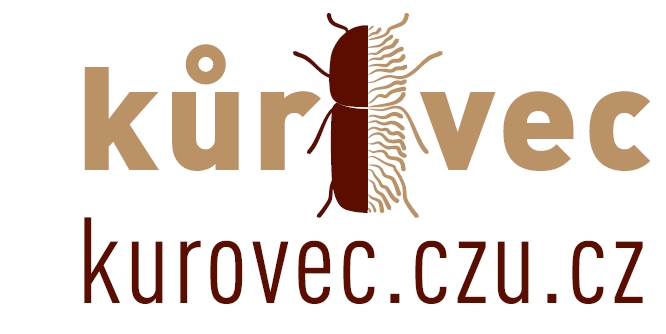State of Art
The issue of remote sensing based detection of bark beetle infestation is a part of our ongoing research projects financially supported by grant programme of Technology Agency of the Czech Republic (early detection by UAVs) and CZU internal grant (monitoring spatial-temporal dynamic by satellites), details are tabulated below. The projects are solved in cooperation with CZU Faculty of Forestry, private companies, stakeholders and with the administration of Krkonoše Mountains National Park (the oldest national park in the Czech Republic registered in UNESCO). Projects deal with the research questions related connected to the potential of UAVs, appropriate time of image acquisition, possibilities of using Sentinel mission, LiDAR and thermal data (Landsat mission) utilization and fusion. So far, we described unique different phases of bark beetle attack stages (using UAVs fine-scale imagery) and supplement the testing site by in-situ meteorological sensors and field surveys.
Motivation
We are highly interested in sharing information resulting from our remote sensing-based research with regards to from UAVs to satellites point of view. We would like to take part in discussions about the issues linked with the practical application of UAVs and satellite (mainly Sentinel missions) data and its integration (e.g. tasks related with calibration, processing, analysing, validation, integration issues etc.). The COST membership will strengthen the development of multidisciplinary high-level research and networking and educational activities leading to (i) joint research and prestigious publications, as well as preparation of an international research project (e.g. H2020), and (ii) education of young interdisciplinary researches.
Aims
The aim of this project is to present opportunities for using remote sensing techniques in forest management, specifically for detecting and monitoring bark beetles at Krkonoše Mountains National Park. There are two main partial aims:
(1) Detecting infested vegetation using unmanned aerial systems: namely, (a) accurate detection of infested trees using multi-spectral devices at detailed scale, (b) determination as to the shortest time after infestation when it is possible to distinguish between healthy and infested trees, (c) assessment of a normalized digital surface model’s (nDSM) usefulness for quality detection, and (d) automating calculations in order to apply the methodology to other ecological (not just forest) disturbances.
(2) Long-term monitoring of spread using satellite imagery: namely, (a) disclosure of bark beetle dynamics during the years 1985 to 2018, (b) analysis of imagery time series to determine counts and intensity of disturbances (beetles calamity), (c) comparison of spread dynamics in production forests versus protected forests, and (d) verification of thermal satellite imagery’s usability for monitoring of forest disturbances.
The project is supported by grant
programme of Technology Agency
of the Czech Republic (early detection by UAVs, project no. TJ01000428) and CZU internal grant (monitoring spatial-temporal dynamic by satellites, project no. CIGA20184206).
This project is a part dealing with the use of GIS and RS techniques, other research teams deal with the study and detection of bark beetle infestation, see Further reading tab.
A free continuation of the project is the creation of an international collaborative community that would effectively address the issues of using remote sensing data for climate change mitigation, the so-called Communication Platform for Using Earth Observation Methods for Vegetation Monitoring in Changing Climate (https://remotelysensed.fzp.czu.cz/en). The ideas of this activity are supported by the State Environmental Fund of the Czech Republic, the governments of the Czech Republic + Slovakia + Poland + Hungary and the Norway Grants.


